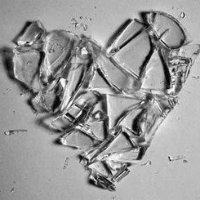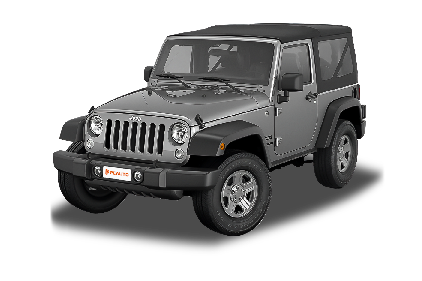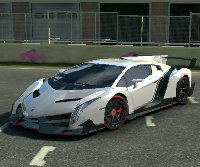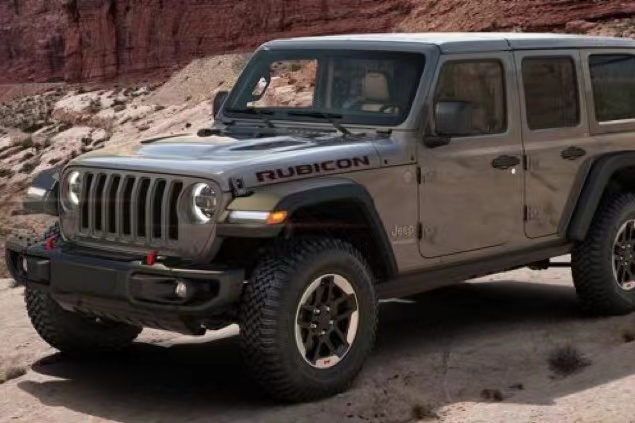Q
Which coolant is suitable for the Jeep Wrangler?
When it comes to choosing coolant for your Jeep Wrangler in Malaysia, prioritize OAT (Organic Acid Technology) formulas that meet Mopar MS-12106 standards. You'll typically find this coolant in pink or purple – it's your best bet for fighting corrosion and keeping that engine running strong for the long haul. With Malaysia's scorching heat, make a habit of checking your coolant levels regularly. If you need to top it up, go with a 50:50 premixed coolant or mix your own using distilled water. And whatever you do, don't mix different coolant brands – that's a surefire way to get unwanted sediment buildup.
Sure, coolant's main job is regulating temperature, but it also handles antifreeze and anti-boil duties. Now, we tropical drivers might brush off the antifreeze part, but those corrosion-inhibiting additives? Total game-changer. Here's the golden rule: every cooling system needs a full flush and refill every 5 years or 80,000 km, whichever comes first. And since the Wrangler's built for off-roading, its cooling system works overtime – keep an eye out for mud or debris clogging the radiator. Malaysia's high humidity doesn't do any favors either, accelerating metal corrosion in the cooling system. So stick to the factory-recommended coolant as per your owner's manual – your Wrangler's performance (and your peace of mind) depend on it.
Special Disclaimer: This content is published by users and does not represent the views or position of PCauto.
Related Q&A
Q
Is a Jeep Wrangler good for long distances?
As a classic hardcore off-road vehicle, the Jeep Wrangler was initially designed more to handle complex terrains rather than ensure long-distance comfort. However, for Malaysian users, if they mainly drive on highways or city roads, it can still handle long-distance trips, but there are a few key points to keep in mind. The Wrangler's high seating position and boxy shape offer an expansive view, but the wind noise and fuel consumption are slightly higher than those of ordinary SUVs, especially when it's fitted with large off-road tires. Its suspension is tuned on the stiffer side, which is great for off-roading but a bit lacking in long-distance comfort. It is recommended to choose the high - end version equipped with an adaptive suspension to enhance the driving experience.
The interior space of the Wrangler is spacious, and the trunk is large enough to hold family luggage. However, the interior materials are mainly focused on practicality, and it lacks the luxurious feel of city SUVs. In Malaysia's hot climate, it is advisable to opt for an enhanced air - conditioning system and regularly check the cooling system. If you plan to explore the rainforests or remote areas of East Malaysia, the Wrangler's off - road capabilities will be a significant advantage. But when driving on pure roads, there may be more fuel - efficient and quieter options at the same price range.
Before a long - distance drive, be sure to check the chassis's sealing to prevent water ingress during rainy weather. Also, while the removable roof design is interesting, be aware of Malaysia's sudden downpours.
Q
Is the Jeep Wrangler spacious?
As a classic off-road SUV, the interior space design of the Jeep Wrangler focuses more on functionality than sheer spaciousness. The front row seats offer ample space and the driving view is wide. However, the legroom in the rear row is relatively compact, which is suitable for passengers of medium build. If you need more space, you can consider the four - door version. The trunk volume is approximately 498 liters in the standard state and can be expanded to nearly 1,300 liters when the rear seats are folded down, which is sufficient for daily use or loading off - road equipment.
For users in Malaysia, although the high ground clearance and the boxy shape of the Wrangler slightly affect the headroom, the convertible design (in some versions), commonly used in the tropical climate, can enhance the sense of openness. It should be noted that the core design of this vehicle lies in its off - road performance. The body - on - frame structure and the robust chassis will take up some cabin space. If you pursue ultimate comfort, you can test - drive city SUVs in the same class.
Its unique detachable doors and roof design can provide passengers with a unique open - air driving experience, which is especially enjoyable on the coastal roads or high - altitude sections in Malaysia. However, it is recommended that you visit the dealership first to experience whether the space meets your personal needs.
Q
What is the cargo capacity of a Jeep Wrangler?
The cargo capacity of the Jeep Wrangler varies depending on the model and configuration. The cargo volume of the two - door Wrangler is approximately 12.9 cubic feet (about 365 liters), while the four - door Wrangler Unlimited offers more space, around 31.7 cubic feet (about 898 liters). If you fully fold down the rear seats, the cargo capacity of the four - door version can be expanded to about 72.4 cubic feet (about 2050 liters), which is suitable for loading larger items.
In Malaysia, the Jeep Wrangler is favored by many outdoor enthusiasts for its strong off - road performance and practicality. The four - door version, in particular, is more suitable for family use or long - distance travel. It should be noted that the actual loading capacity can also be affected by vehicle configuration (such as the location of the spare tire) and modifications. It is recommended to conduct on - site inspections according to personal needs or consult the dealer before purchasing.
In addition, the modular design of the Wrangler allows owners to remove the doors and the roof, further increasing flexibility. However, pay attention to the weather changes in Malaysia to avoid sudden rainfall affecting the safety of the cargo.
Q
Can a Jeep Wrangler go off-road?
The Jeep Wrangler is a vehicle specifically designed for off - roading. Its powerful four - wheel drive system, high ground clearance, and robust body structure enable it to perform excellently on various complex terrains in Malaysia. Whether it's a muddy mountain road, sandy area, or rocky section, the Wrangler can handle them with ease.
Equipped with a lockable differential and an electronic anti - slip system, the Wrangler further enhances its ability to get out of trouble on low - traction surfaces. Meanwhile, its detachable roof and door design add more fun to outdoor adventures. In consideration of Malaysia's tropical climate and changeable terrains, the Wrangler's waterproof design and corrosion - resistant materials ensure the vehicle's durability.
Moreover, off - road enthusiasts in Malaysia can choose to install tires and suspension systems that are more suitable for local road conditions according to their needs to further improve the vehicle's performance. It should be noted that although the Wrangler has outstanding off - road capabilities, drivers still need to master basic off - road skills. For example, on steep slopes or in deep - water sections, they should maintain an appropriate speed and select the right gear. Regular checks on key vehicle components such as the brakes and transmission system are also necessary to ensure safety and optimal performance.
Q
Which Jeep Wrangler to stay away from?
In Malaysia, the Jeep Wrangler is a popular rugged off - road vehicle. However, some common problems may exist in certain years or models, and it is recommended that consumers choose carefully. For example, some models equipped with the 3.6 - liter Pentastar V6 engine from 2012 to 2018 reported cylinder head issues, which might lead to coolant leakage or engine overheating. Also, some models before 2018 could experience occasional malfunctions due to the complex electronic systems. In addition, the automatic transmissions of the early JK series (2007 - 2018) may require more maintenance after long - term high - intensity off - road use.
In the tropical climate of Malaysia, it is advisable to pay special attention to the vehicle's cooling system and sealing to prevent the aging of electronic components or rubber parts caused by high temperature and humidity. If you are considering a used Wrangler, it is recommended to give priority to vehicles with complete maintenance records and professional inspections. At the same time, pay attention to the actual usage feedback from local Jeep owner forums or communities.
Overall, the Wrangler still has excellent off - road performance and modification potential. However, when making a choice, you need to consider your own needs and budget, and ensure regular maintenance to extend the vehicle's lifespan.
Q
How many kilometers will a Jeep Wrangler last?
The Jeep Wrangler, a vehicle renowned for its durability and off - road performance, can typically cover over 300,000 kilometers or even more under normal maintenance conditions. The actual lifespan depends on factors such as driving habits, road conditions, and maintenance frequency. In Malaysia, due to the hot and rainy climate, it is recommended that car owners pay special attention to regular oil changes, cooling system checks, and chassis anti - rust treatments to extend the vehicle's lifespan.
Moreover, the engine and transmission of the Wrangler are designed to be quite robust. The diesel version, in particular, performs more stably during long - distance drives, making it well - suited to Malaysia's diverse terrains. To further protect your beloved vehicle, it is advisable to avoid frequent extreme off - road driving and opt for original or high - quality replacement parts for repairs. Understanding these details can not only help owners maximize the Wrangler's lifespan but also ensure it maintains optimal performance on various road conditions.
Q
What are the negatives of a Jeep Wrangler?
Although the Jeep Wrangler is widely loved for its powerful off - road capabilities and classic design, it still has some shortcomings in daily use in Malaysia. Firstly, it has relatively high fuel consumption. Especially for models equipped with large - displacement engines, their fuel economy in city driving is just average, resulting in high long - term usage costs.
Secondly, in terms of comfort, due to its emphasis on off - road performance, the suspension is tuned to be quite stiff. When driving on paved roads, there is a noticeable sense of bumpiness, and long - distance driving can easily lead to fatigue. The interior design is mainly focused on practicality. Compared with urban SUVs at the same price range, the materials and workmanship are a bit rough, and the technological features are not rich enough. Additionally, the boxy body shape leads to significant wind noise, and there is obvious noise inside the vehicle when driving at high speeds. With its large body size, it can be a bit inconvenient to maneuver in the narrow streets and compact parking spaces in Malaysia.
Finally, regarding maintenance costs, as an imported vehicle, the supply cycle of parts is long and the prices are high. However, these drawbacks are inevitable trade - offs due to its hardcore off - road positioning. For users who truly need powerful off - road capabilities, these deficiencies are acceptable. It is recommended that potential buyers weigh the pros and cons based on their own usage needs. If the vehicle is mainly used for commuting in the city, they may need to consider SUV models that focus more on comfort and economy.
Q
What Chinese car is similar to the Jeep Wrangler?
In the Chinese market, models with a similar style to the Jeep Wrangler include the Tank 300 by Great Wall Motors and the BJ40 by Beijing Automobile. Both of these models feature a rugged off - road design, with a body - on - frame structure, four - wheel drive systems, and high ground clearance, making them suitable for off - road enthusiasts. The Tank 300 has drawn attention with its retro styling and modern technological features, while the BJ40 has won market recognition for its classic boxy appearance and practical off - road capabilities.
For Malaysian consumers, these models may be available through import channels. However, they need to pay attention to local regulations and after - sales support. As a tropical country, Malaysia has a hot and humid climate, so the durability of off - road vehicles in such an environment should be considered. It is recommended to thoroughly understand the vehicle's heat dissipation performance and anti - rust treatment before purchasing.
In addition, Malaysia has diverse terrains, with complex road conditions ranging from urban areas to rainforests. When choosing an off - road vehicle, it is also necessary to balance daily practicality and fuel economy. If the budget is limited, the used - car market or parallel import channels can be considered, but be sure to check the vehicle's condition and warranty terms.
Q
Do Jeep Wranglers need a lot of maintenance?
As a vehicle renowned for its off-road performance, the Jeep Wrangler does require more maintenance compared to regular city SUVs. However, this mainly depends on the owner's driving habits and the road conditions in Malaysia. The Wrangler features a body-on-frame construction and a robust mechanical structure, making it suitable for tackling rough terrains. But this also means that its suspension system, transmission components, and seals need to be inspected regularly, especially after frequent off-road adventures or driving in a wet and rainy environment.
In Malaysia's hot and humid climate, it is recommended to pay special attention to anti-rust treatment for the vehicle body, the maintenance of rubber seals, and the upkeep of the cooling system. At the same time, regularly change the differential oil and transmission oil to ensure the normal operation of the four-wheel-drive system. For owners who mainly use the vehicle for urban commuting, regular maintenance according to the official maintenance manual is sufficient. However, if you frequently go off-road, the maintenance interval should be shortened.
It's worth mentioning that the Wrangler's modification culture is also very popular in Malaysia. However, any modifications to the powertrain or suspension may affect the original factory warranty and increase the complexity of maintenance. It is recommended to carry out modifications through official authorized channels to ensure reliability.
Overall, as long as you maintain the vehicle on schedule and choose a regular repair shop, the durability of the Wrangler is guaranteed, and its maintenance cost is comparable to that of other hardcore off-road vehicles in the same class.
Q
How many suitcases fit in a Jeep Wrangler?
The trunk capacity of the Jeep Wrangler depends on the variant and configuration. Generally speaking, the trunk space of the two - door Wrangler is about 12.9 cubic feet (about 365 liters), which can hold 2 - 3 medium - sized suitcases (about 24 inches). The four - door Wrangler has a larger trunk space, approximately 31.7 cubic feet (about 898 liters), and can easily accommodate 4 - 5 medium - sized suitcases, or even more. If you fold down the rear seats, the storage space can be further increased to 72.4 cubic feet (about 2050 liters), which is suitable for loading large items or for long - distance trips.
For users in Malaysia, the practicality of the Wrangler is not only reflected in its storage space. Its powerful four - wheel drive system and off - road capabilities are also suitable for the diverse local road conditions, especially the driving needs during the rainy season or in remote areas. It should be noted that the actual loading capacity is also affected by the size and shape of the suitcases. It is recommended to measure on - site or refer to the official data before purchasing.
In addition, the removable roof and door design of the Wrangler also provides more flexibility for outdoor activities, making it very suitable for Malaysian car owners who love adventures.
Latest Q&A
Q
How many miles per gallon does a 2021 Mitsubishi get?
Mitsubishi's fuel efficiency in 2021 varies by model and powertrain. Take the Outlander, for example – the 2.4L four-cylinder front-wheel-drive version gets around 25 mpg combined (about 10.6 km/L). The plug-in hybrid (PHEV) model, on the other hand, delivers better efficiency in all-electric mode, though actual numbers depend on driving conditions and battery state. For Malaysian buyers, fuel economy is also affected by local road conditions, driving habits, and fuel quality. It’s best to check Mitsubishi Malaysia’s official localized data or real owner reviews for the most accurate info. With hybrids and EVs gaining traction globally, if you’re thinking about long-term running costs, keep an eye on Mitsubishi’s new energy tech – stuff like the PHEV system’s regenerative braking and all-electric range, which can really cut down on fuel use for city commutes. When picking a model, make sure to factor in your daily driving distance and how easy it is to access charging stations.
Q
What kind of engine is in the 2021 Triton GSR?
The 2021 Mitsubishi Triton GSR is powered by a 2.4-liter MIVEC turbocharged diesel engine, which features Mitsubishi's advanced common-rail direct injection technology and a variable geometry turbocharger. It cranks out 181 horsepower and a peak torque of 430 Nm, mated to a 6-speed automatic transmission, delivering strong performance and impressive fuel efficiency. It's perfectly suited for Malaysia's diverse road conditions, handling both city driving and off-road adventures with ease. This engine also meets Euro 5 emission standards, showcasing Mitsubishi's commitment to eco-friendly technology. For Malaysian consumers, the Triton GSR's engine isn't just powerful; it's also highly durable and relatively low-maintenance, making it a standout in Mitsubishi's pickup truck lineup. What's more, the turbo diesel engine provides high torque at low revs, making the vehicle particularly capable when hauling loads or towing, ideal for users who need frequent transportation or enjoy outdoor activities.
Q
What is the fuel consumption of the Mitsubishi Triton 2021?
The fuel consumption of the 2021 Mitsubishi Triton varies depending on the drive type and transmission configuration. According to official figures, models equipped with the 2.4-liter turbocharged diesel engine (with MIVEC technology) have an average fuel consumption of approximately 7.6 liters per 100 kilometers for the manual transmission version, and around 8.0 liters per 100 kilometers for the automatic transmission version. Four-wheel drive models have slightly higher fuel consumption due to additional mechanical losses, but overall, it remains one of the more fuel-efficient pickups in its class. This engine's ability to deliver high torque at low revs makes it well-suited for Malaysia's hilly terrain and cargo-carrying needs, while its ECO driving mode further optimizes fuel efficiency. It's worth noting that actual fuel consumption can be affected by driving habits, road conditions, and load. It's recommended that owners perform regular maintenance, such as cleaning the air filter and changing the oil promptly, to maintain optimal fuel efficiency. For Malaysian users who frequently drive long distances or need a vehicle that balances family and commercial use, the Triton's balanced fuel economy and reliability make it a solid choice. Other models in the same class with similar performance include the Toyota Hilux and Ford Ranger, though each has slightly different tuning priorities.
Q
How much can a 2021 Mitsubishi Triton tow?
The 2021 Mitsubishi Triton offers a maximum towing capacity of 3.1 tonnes (3100kg) in the Malaysian market. This figure applies to the automatic transmission models equipped with the 2.4-liter turbocharged diesel engine, which cranks out 181 horsepower and 430 Nm of torque—plenty of muscle to handle towing needs. It’s important to note that actual towing performance depends on factors like trailer type, load distribution, and road conditions. Owners should always consult the vehicle manual before hauling heavy loads and ensure the towing setup is properly installed.
Underpinning the Triton is a chassis built with high-strength steel and a reinforced suspension system, both working to boost towing stability. The standard trailer stability control system also helps minimize trailer sway during driving, adding an extra layer of safety. For those who tow regularly, keeping an eye on transmission oil temperature, brake system condition, and tire wear is crucial—these small checks go a long way in extending vehicle life and ensuring safe journeys. Malaysia’s hilly terrain and humid climate can affect towing performance, so it’s wise to reduce speed slightly and take more frequent breaks during long trips or when carrying heavy loads to prevent engine overheating.
Q
How big is the 2021 Triton?
The 2021 Mitsubishi Triton, a popular pickup truck in the Malaysian market, measures 5305mm in length, 1815mm in width, and 1780mm in height, with a wheelbase of 3000mm. This size ensures ample passenger space and excellent cargo capacity, with the truck bed sized at 1520mm long, 1470mm wide, and 475mm high – perfect for daily hauling and outdoor adventures. In Malaysia, it's favored for its durability and off-road performance, handling the country's varied road conditions and climate like a champ. The Triton comes with an advanced 4WD system and multiple driving modes, making light work of tricky terrains. Inside, the focus is on practicality and comfort, featuring a multifunction steering wheel and touchscreen infotainment system to up the driving experience. For Malaysian buyers, the Triton isn't just a workhorse; it's also a solid choice for family getaways. Its reliability and versatility keep it competitive in its class.
View More



















Pros
Cons